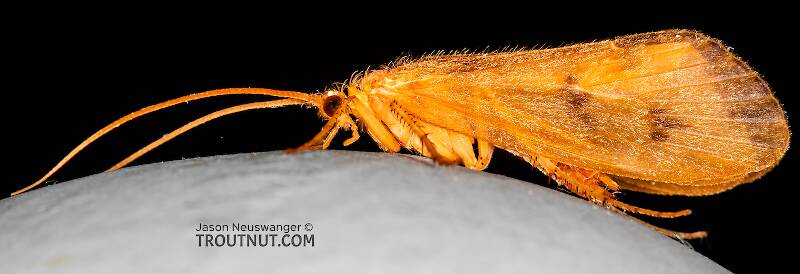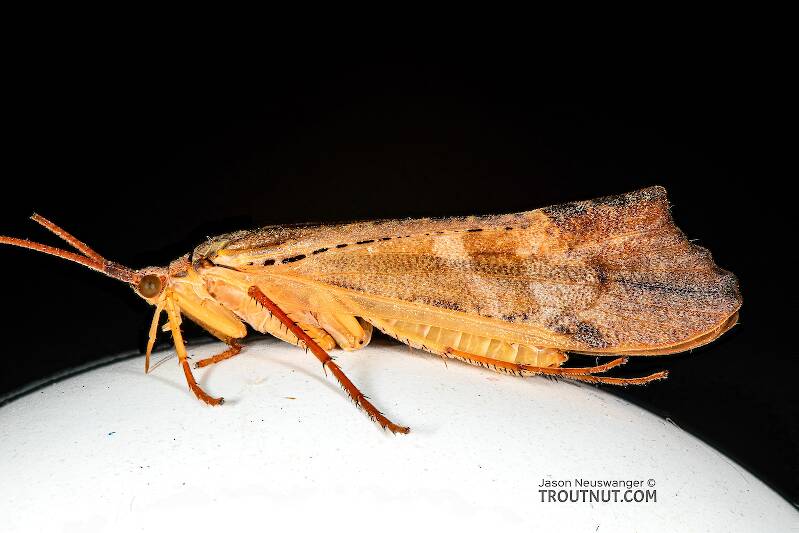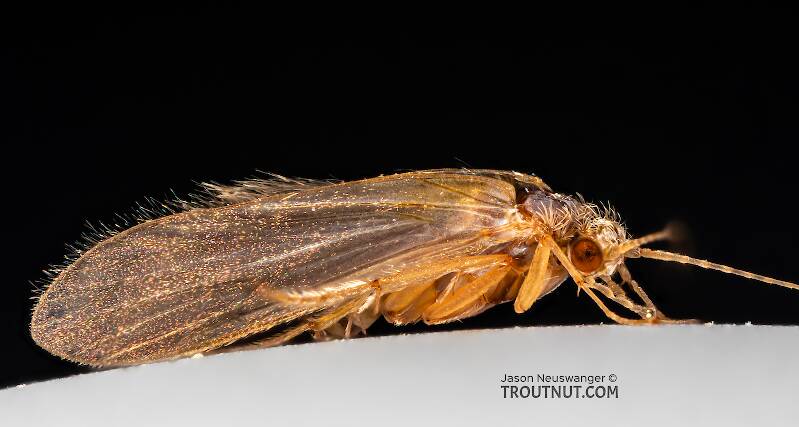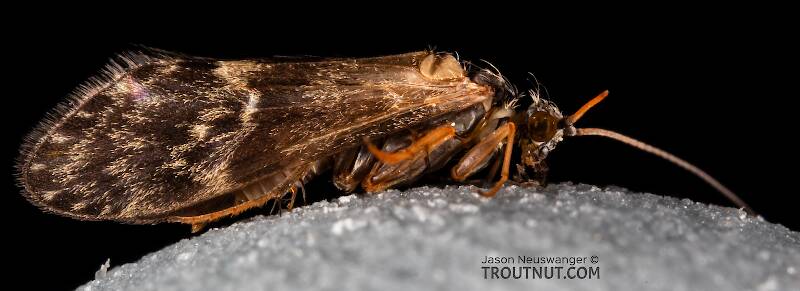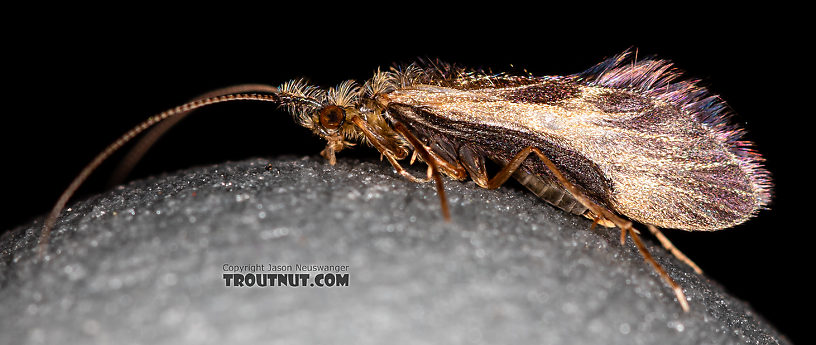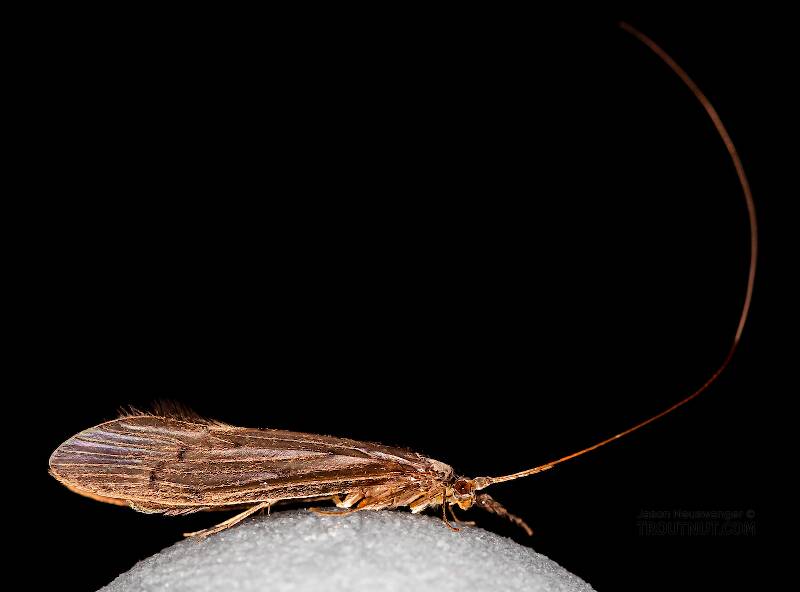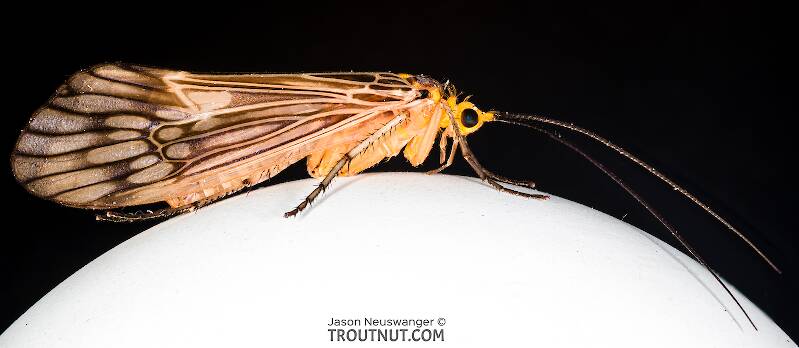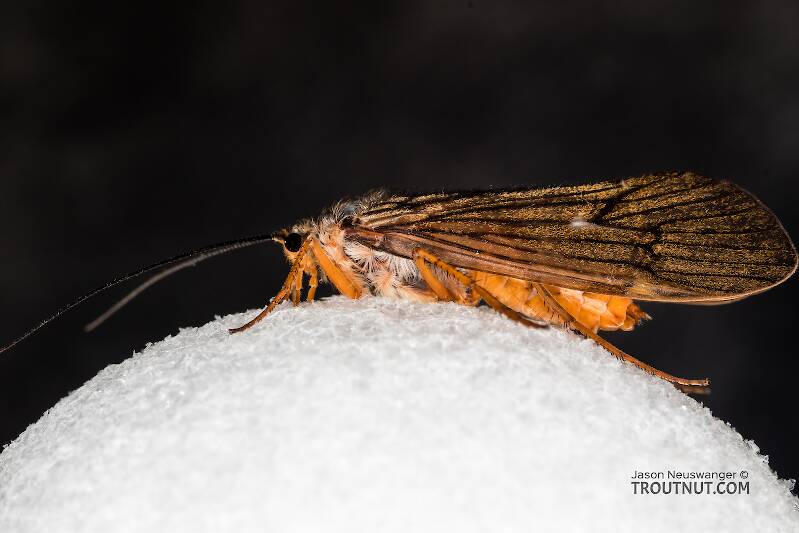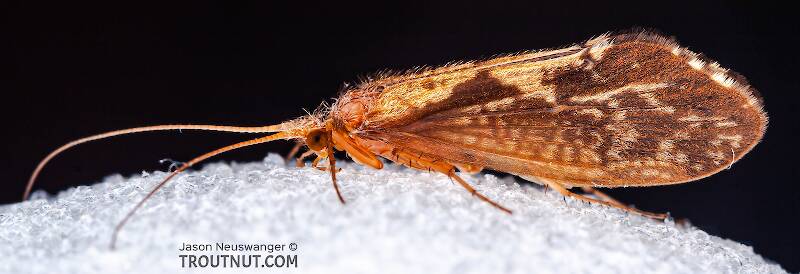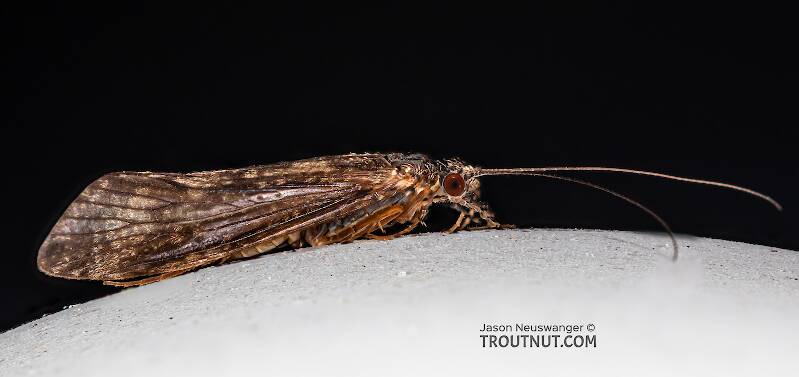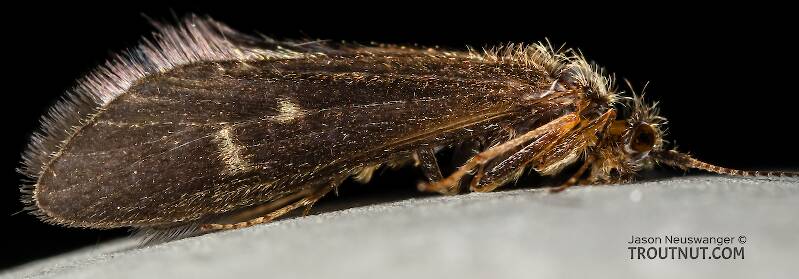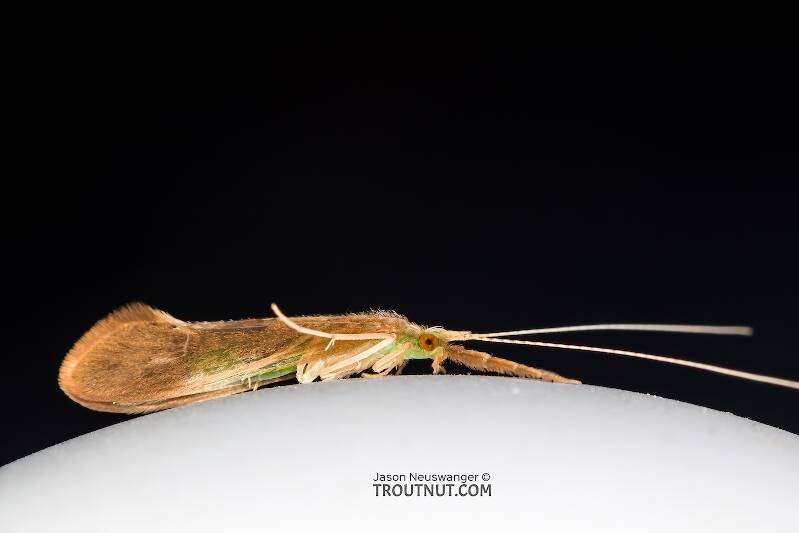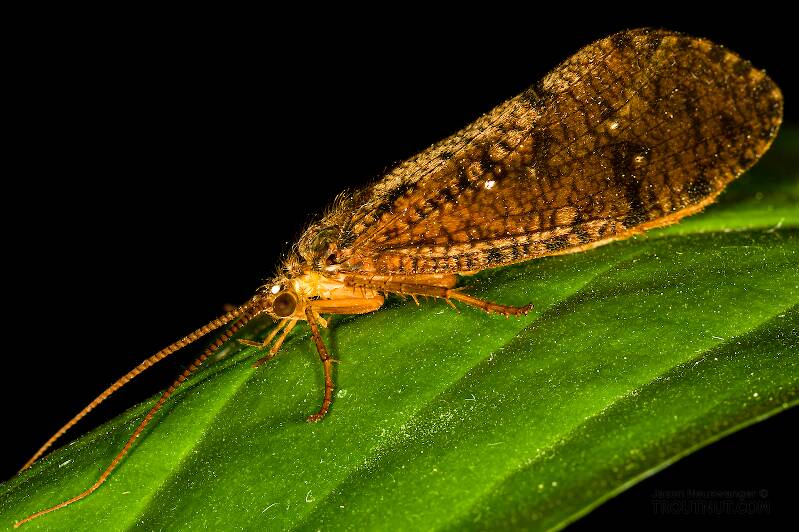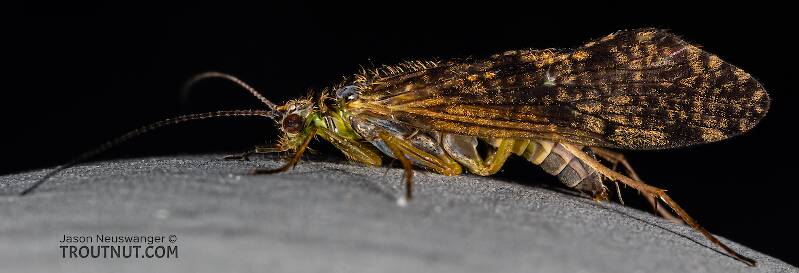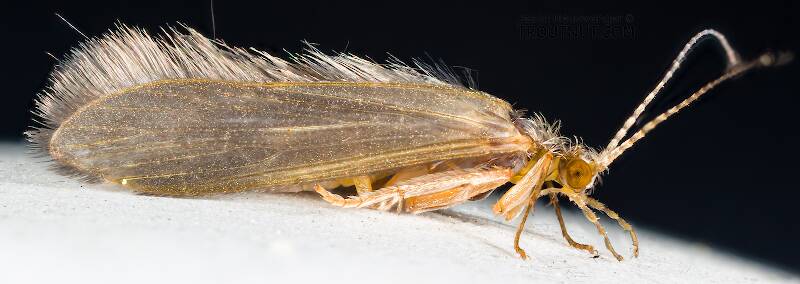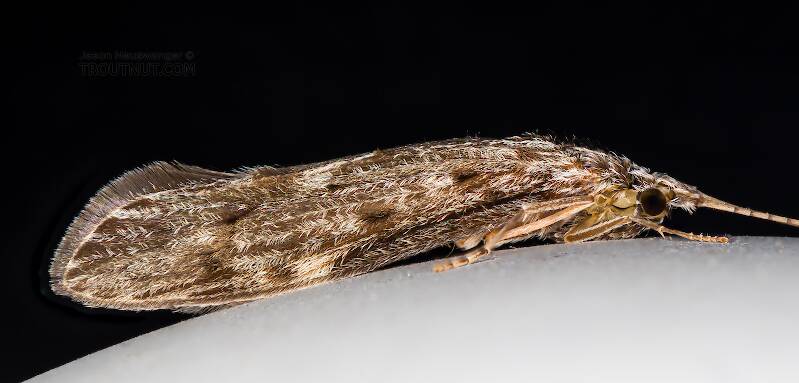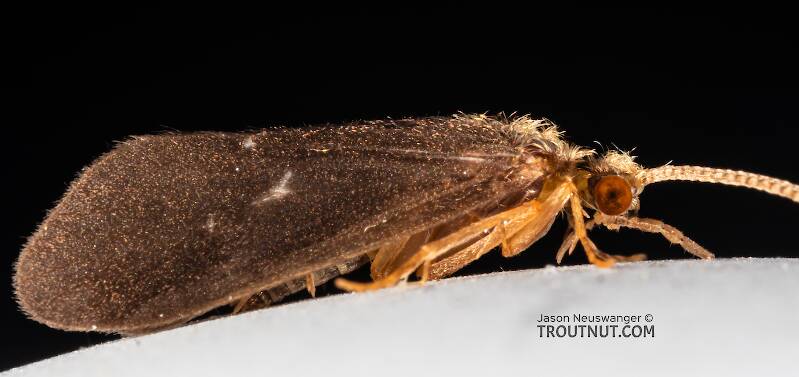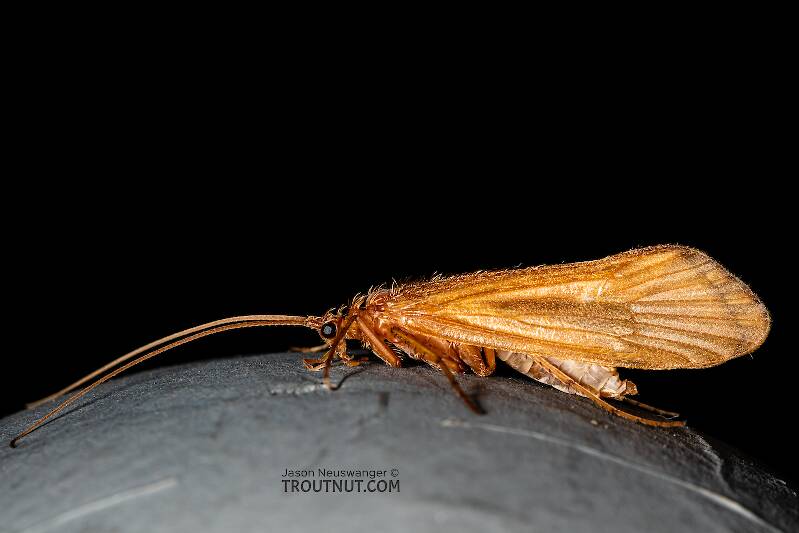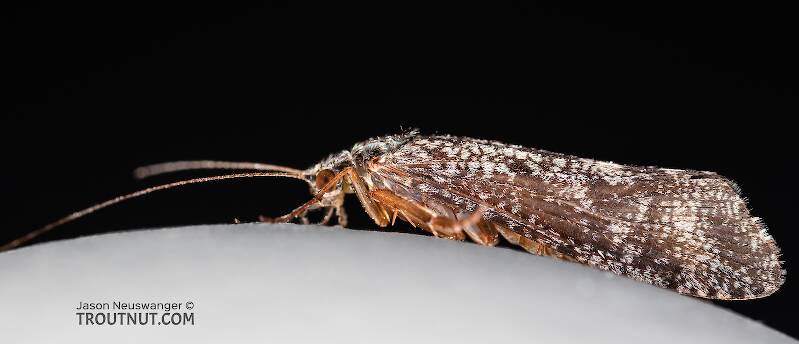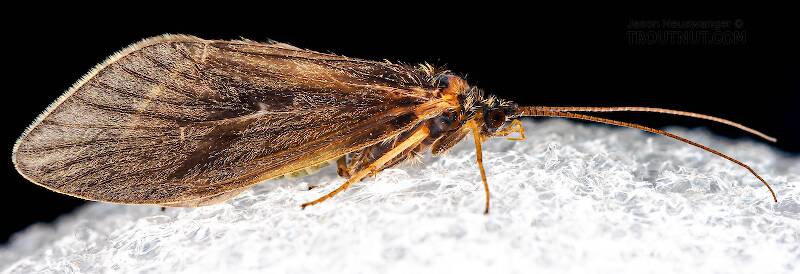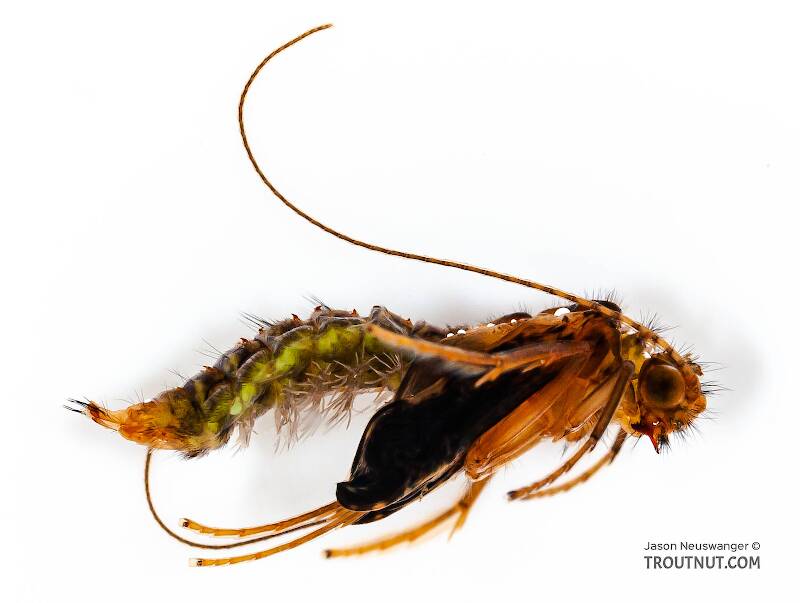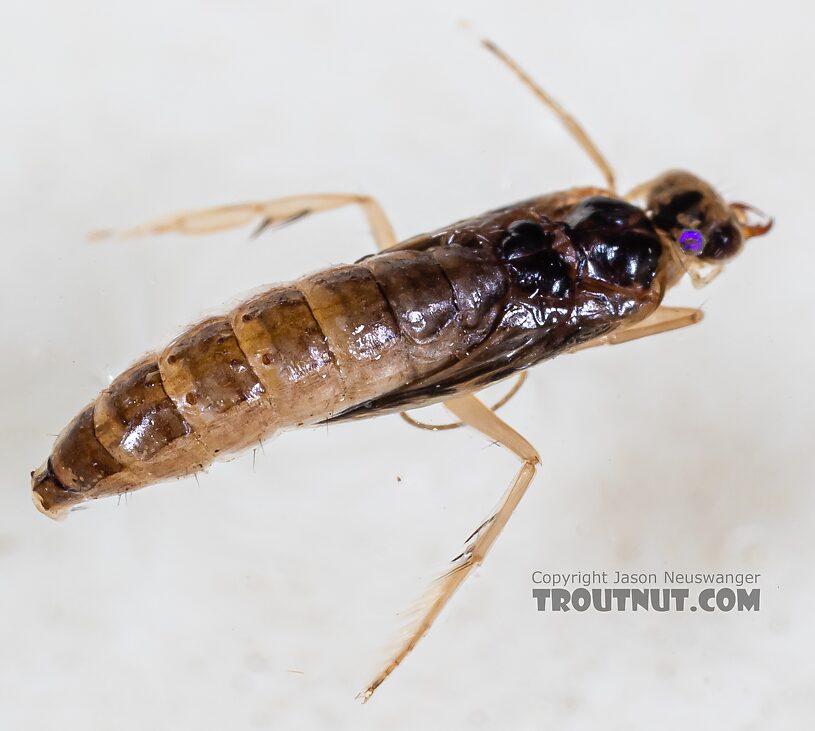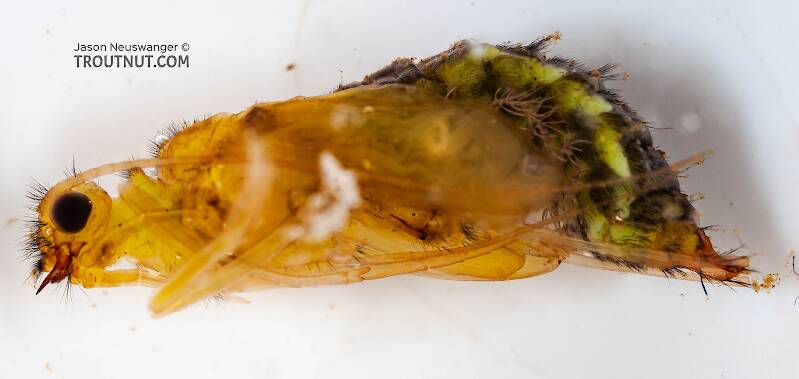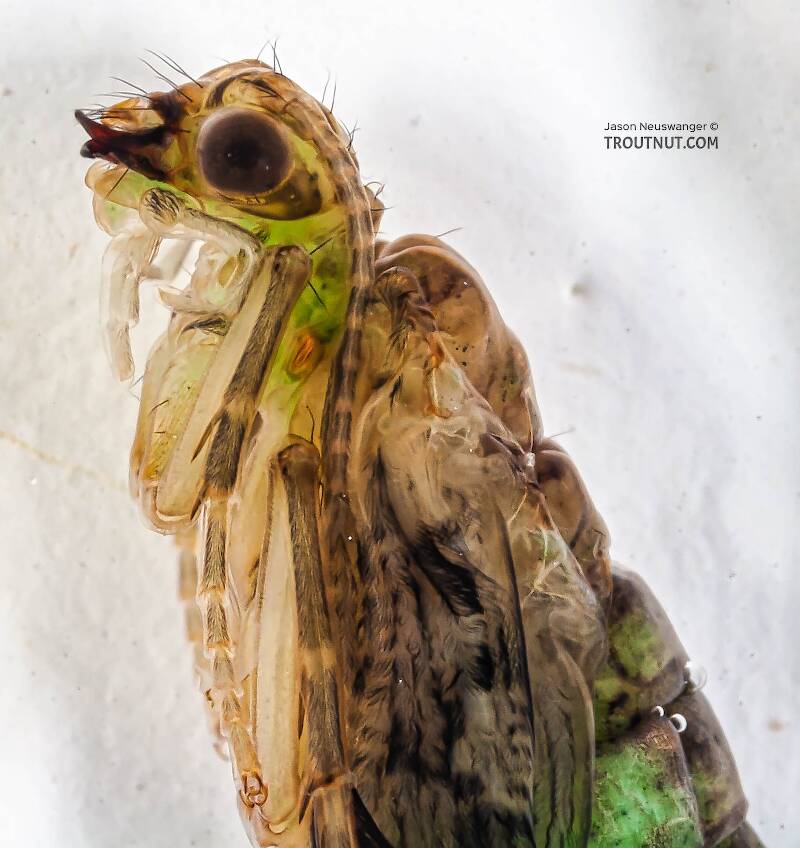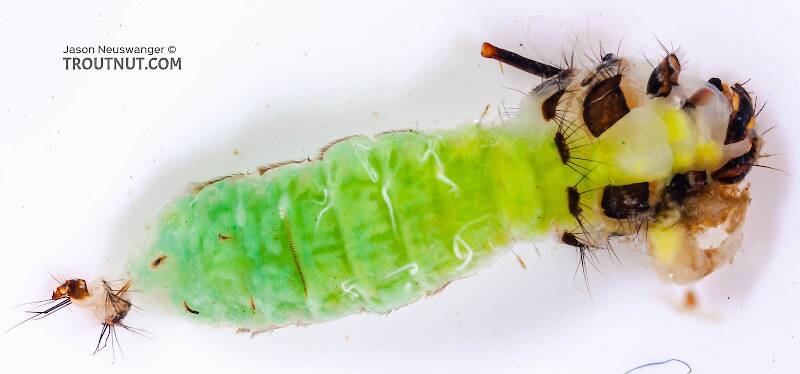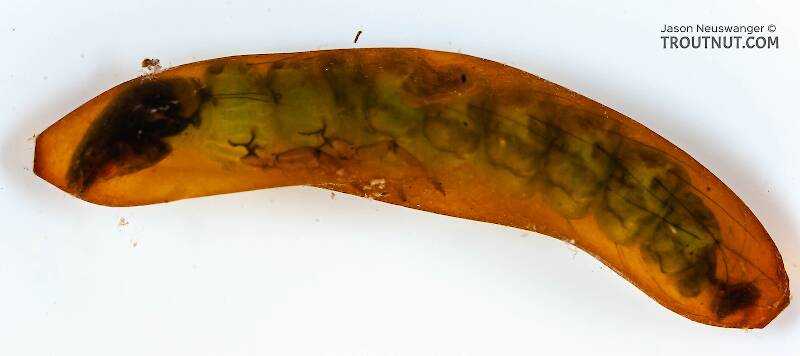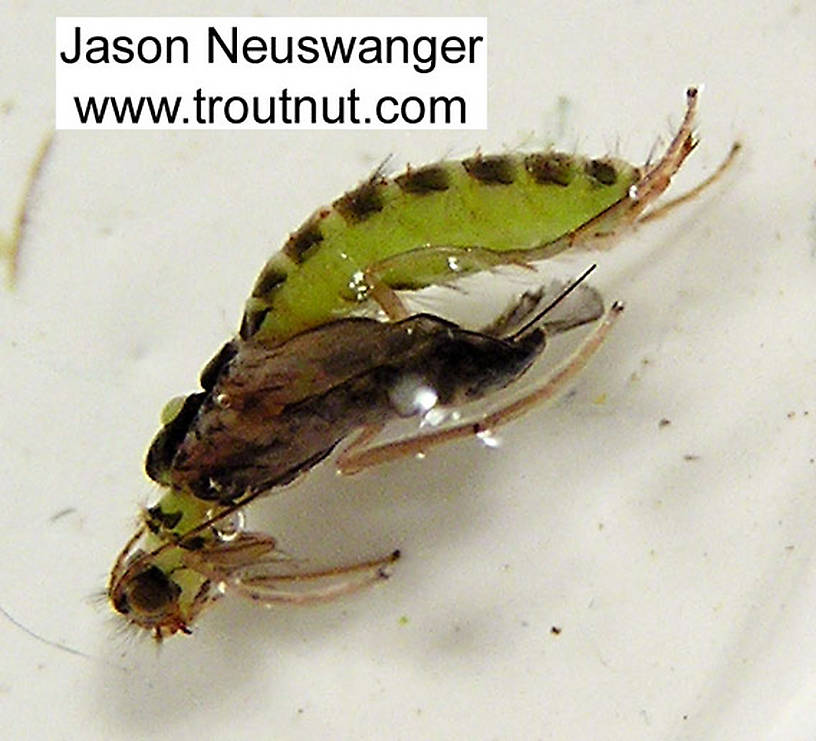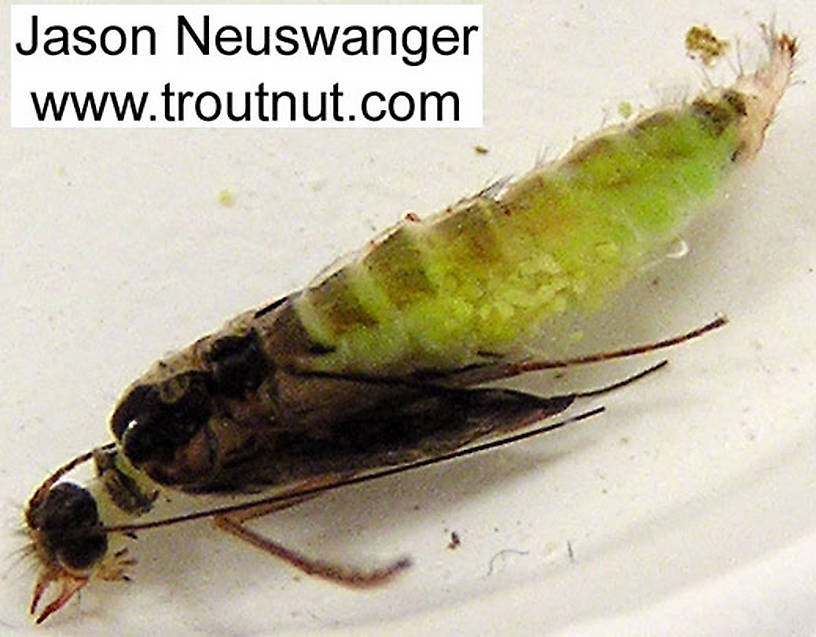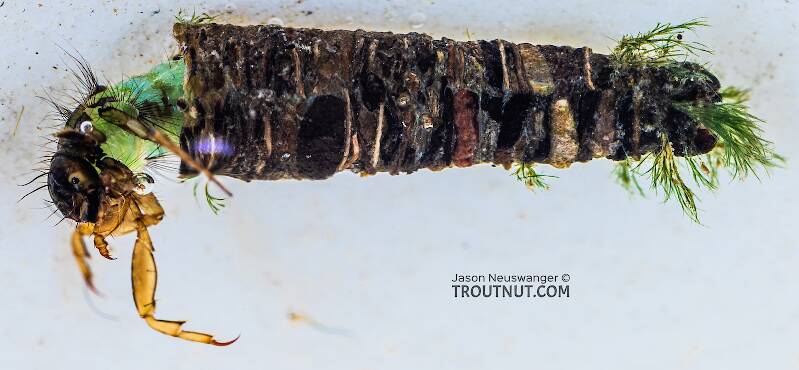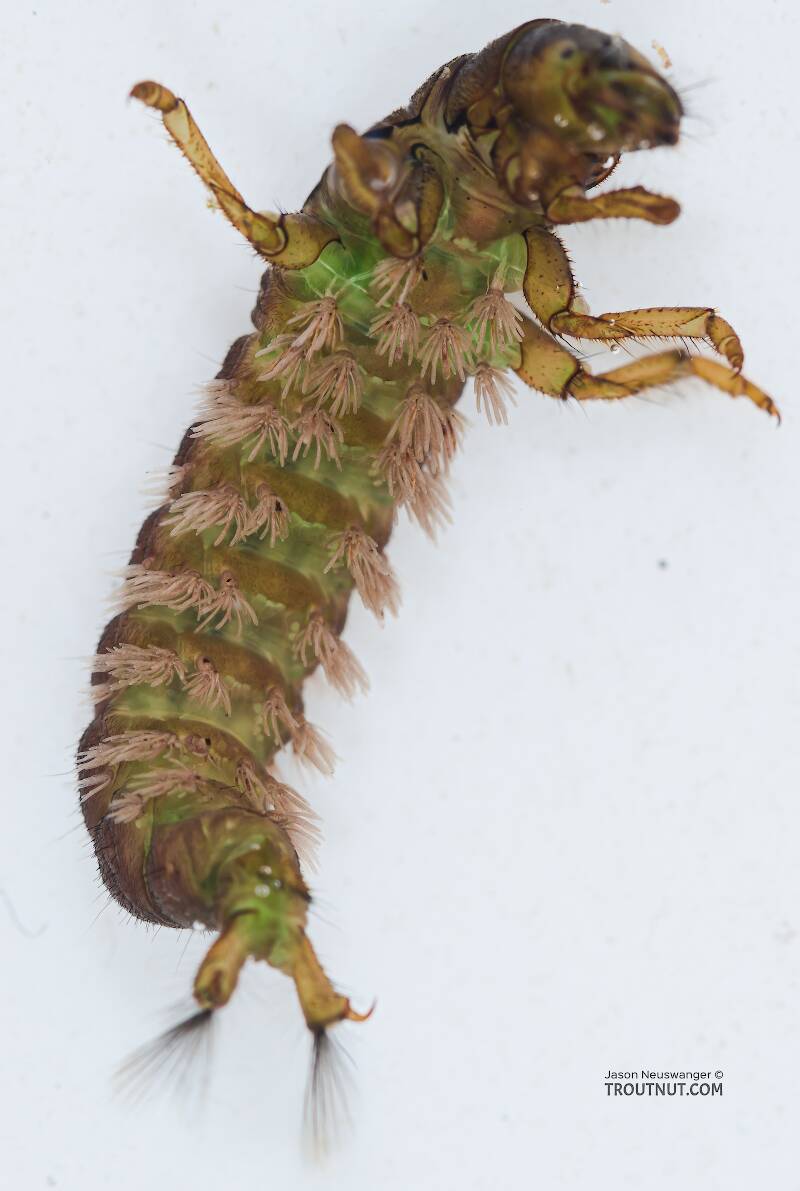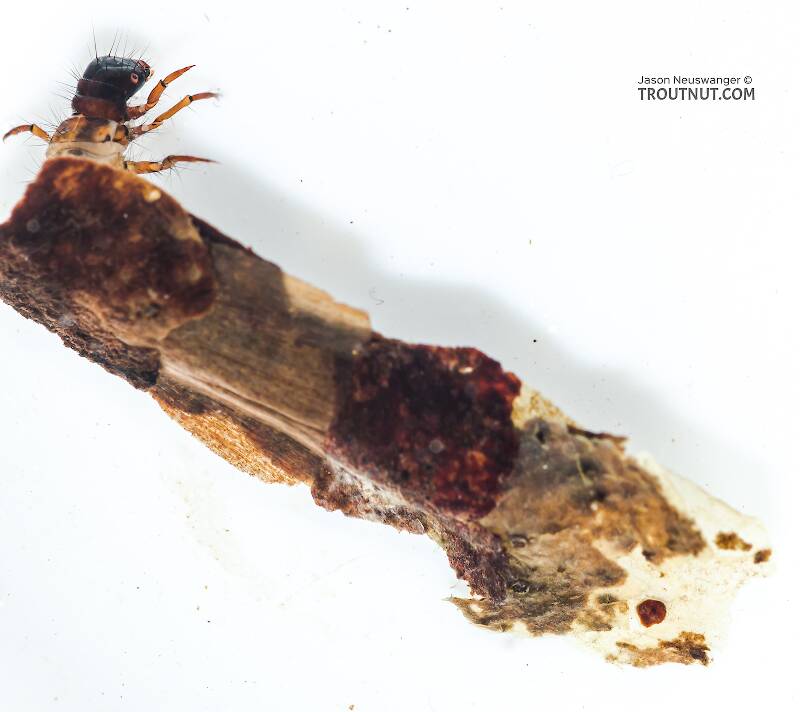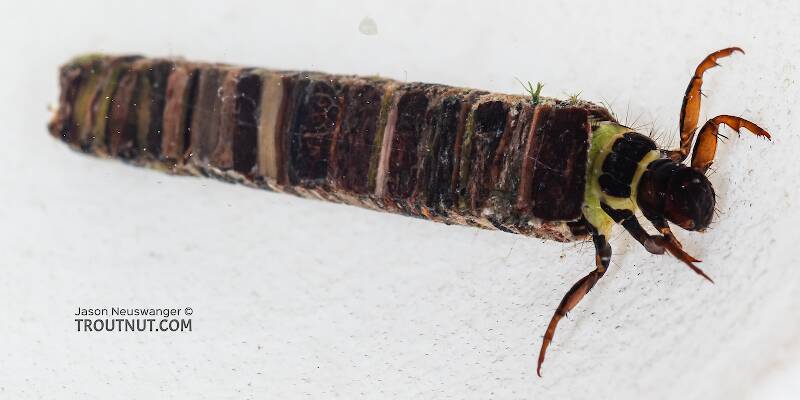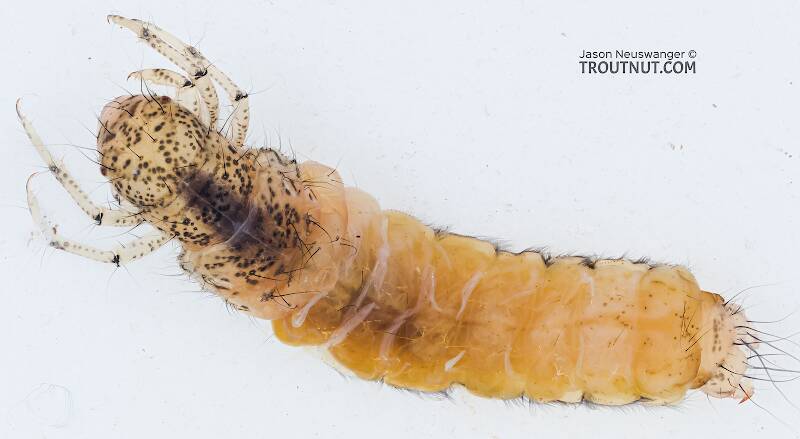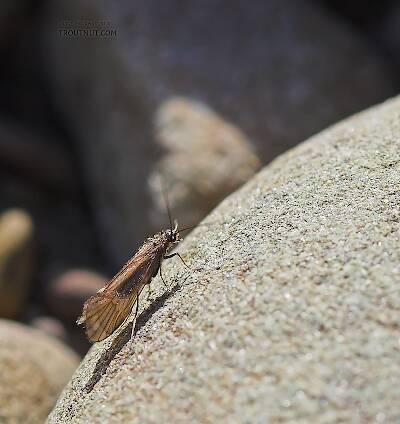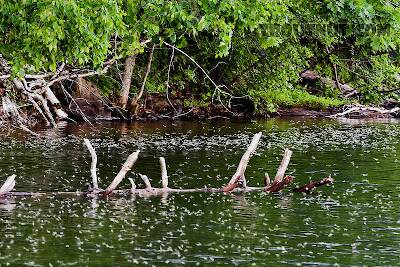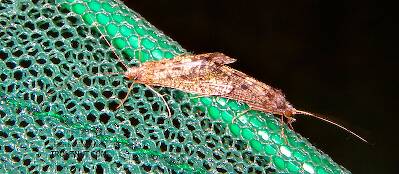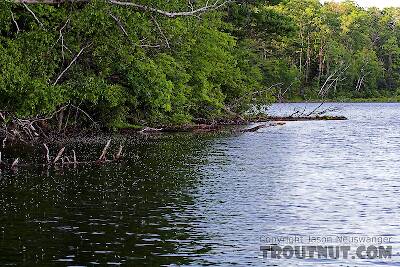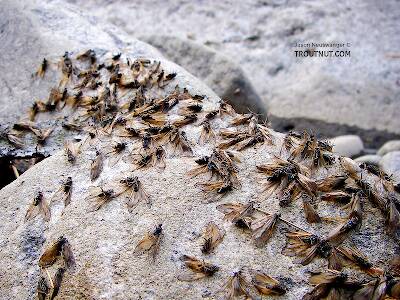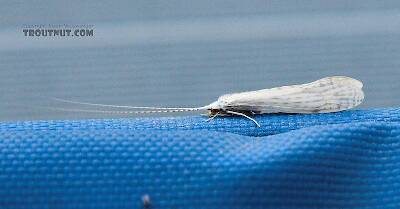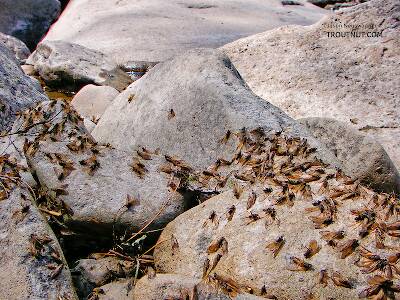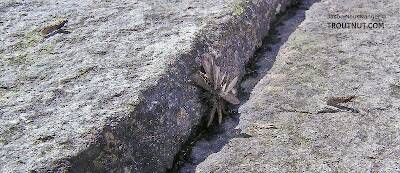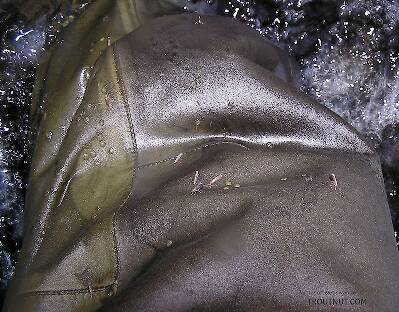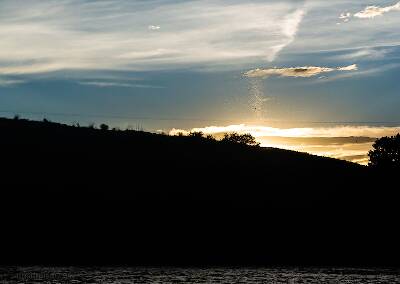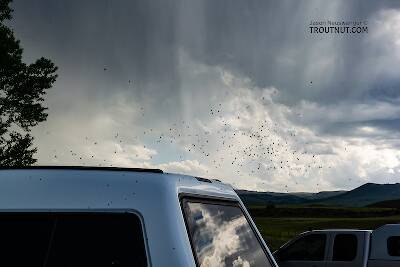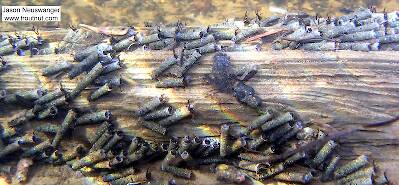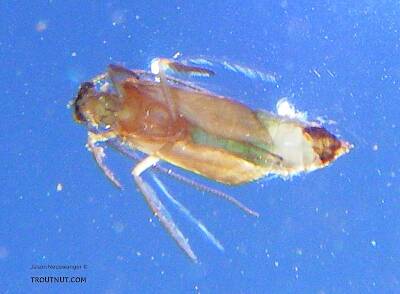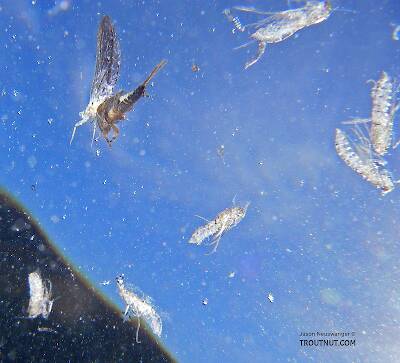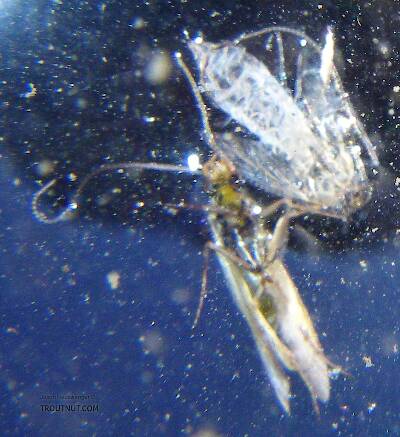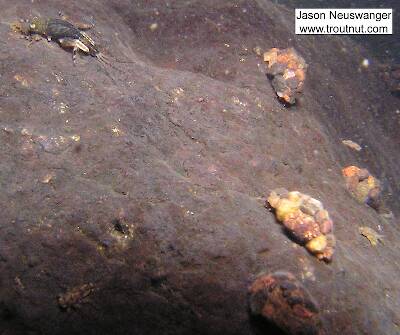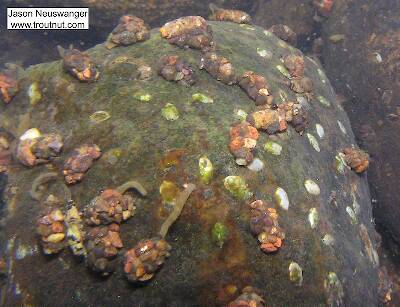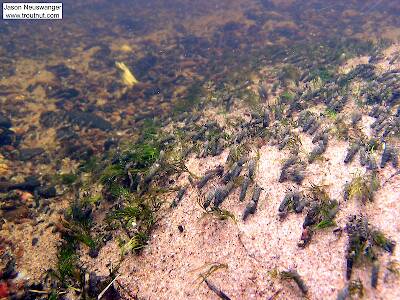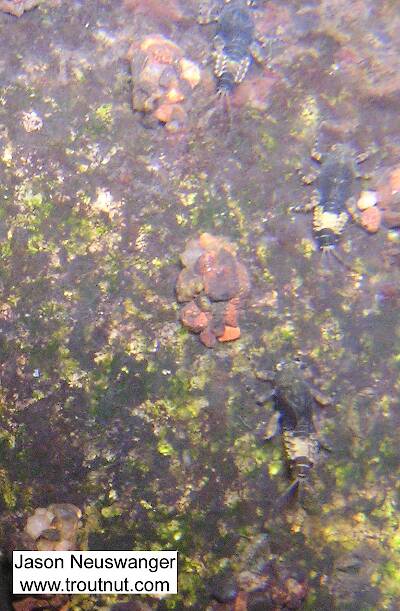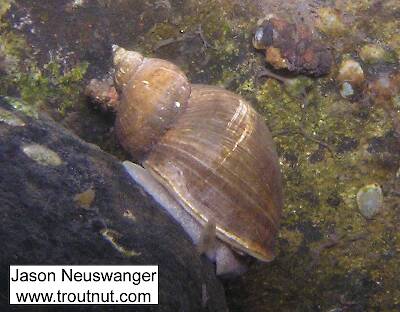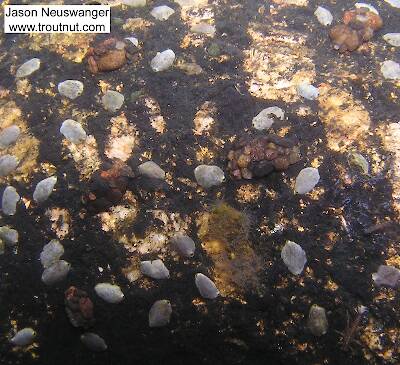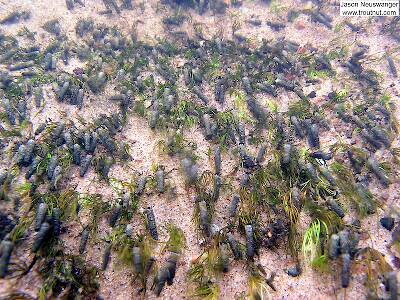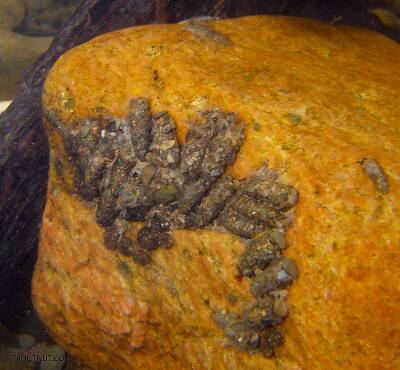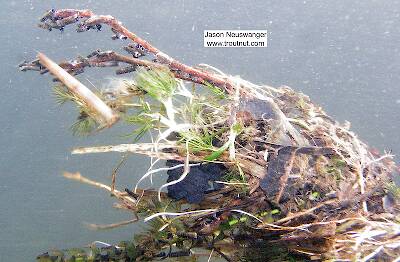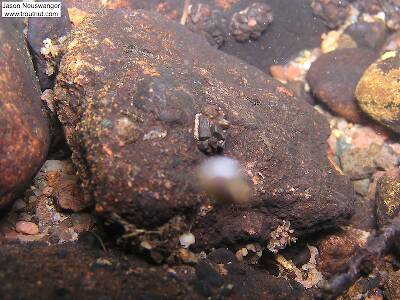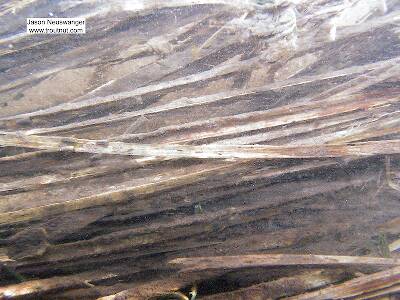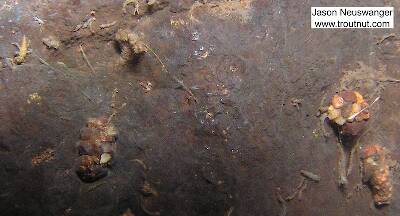
Salmonflies
Pteronarcys californica
The giant Salmonflies of the Western mountains are legendary for their proclivity to elicit consistent dry-fly action and ferocious strikes.
Featured on the forum

Some characteristics from the microscope images for the tentative species id: The postero-lateral projections are found only on segment 9, not segment 8. Based on the key in Jacobus et al. (2014), it appears to key to Neoleptophlebia adoptiva or Neoleptophlebia heteronea, same as this specimen with pretty different abdominal markings. However, distinguishing between those calls for comparing the lengths of the second and third segment of the labial palp, and this one (like the other one) only seems to have two segments. So I'm stuck on them both. It's likely that the fact that they're immature nymphs stymies identification in some important way.

Troutnut is a project started in 2003 by salmonid ecologist Jason "Troutnut" Neuswanger to help anglers and
fly tyers unabashedly embrace the entomological side of the sport. Learn more about Troutnut or
support the project for an enhanced experience here.
Insect Order Trichoptera (Caddisflies)
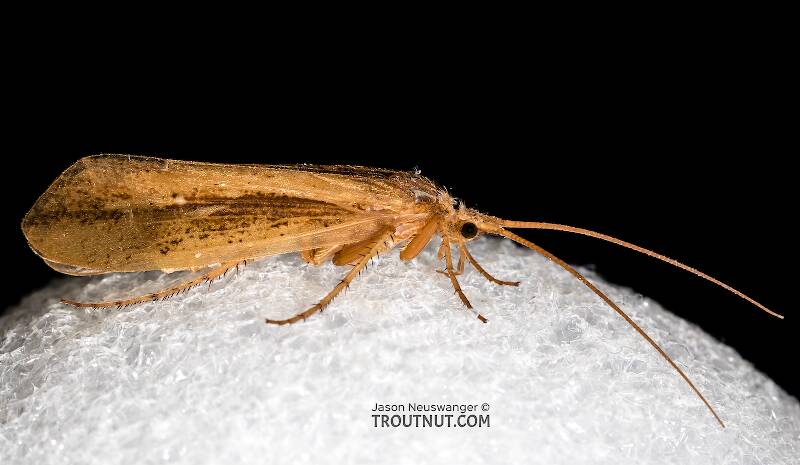
Caddis species actually provide as much incentive to learn their specifics as the mayflies do. There is just as much variety in their emergence and egg-laying behaviors, and as many patterns and techniques are needed to match them. Anglers are hampered only by the relative lack of information about caddisfly behavior and identification.
Hatching behavior
In many species, the pupae become very active just before emergence and drift along the bottom of the river, sometimes for hours. The "deep sparkle pupa" patterns introduced by Gary LaFontaine in Caddisflies are the most popular of many imitations inspired by this behavior. It is a deep nymph fisherman's dream. Sometimes they drift similarly just below the surface for a long time before trying to break through.Pupae of different species use three different methods to emerge:
- Most species rise to the surface and struggle through. They usually take flight quickly once they're out of the water, but slow species first struggle and drift long distances half-submerged as they wriggle free from their pupal shucks.
- The pupae of some species crawl out of the water on rocks, sticks, and such, so that the adults emerge high and dry.
- Some pupae rise to the surface and swim quickly across it to shore where they crawl out to emerge.
Most caddis pupae are good swimmers, and they use their legs as paddles rather than wiggling their bodies to move.
After emerging, caddisfly adults live for a long time compared to mayflies, in part because they are able to drink to avoid dehydration (mayfly adults cannot eat or drink). This flight period lasts anywhere from a few days to a few months, depending on the species, so mating adults may be seen on or over the water long after emergence is complete.
Egg-Laying behavior
Many caddisfly females dive underwater to lay their eggs on the stream bottom. Some crawl down objects to do this but most swim right down through the water column. The latter are responsible for my fastest trout fishing action ever -- days when trout raced each other to attack my flies the moment they hit the water, cast after cast.Others lay their eggs on the surface in various ways. They may fly low over the water, periodically dipping their abdomens to lay eggs. Others land on the surface repeatedly, fussing and fluttering in enticing commotion. Less active species may fall spent to the surface with all four wings spread out. Others ride the water serenely while laying their eggs, and they are the easiest to match with the dead-drift techniques of mayfly fishermen.
Some egg-laying methods keep the adult females safe from trout altogether. They may drop their eggs into the water from overhanging plants, or lay their eggs on the vegetation itself. That way the eggs don't enter the river until the next rain--an excellent drought survival strategy.
Larva & pupa biology
Most caddisfly larvae live in cases they build out of sand, rock, twigs, leaf pieces, and any other kind of underwater debris. Some even generate their own cases out of silk. There is tremendous variation in case style and also in the way the larvae manage their cases: whether they replace it as they grow or renovate their old one, and whether they carry it around or fix it to an object. Trout love to eat these larvae, case and all.Other common caddis larvae build nets instead of cases. These are not residences but hunting traps, like tiny spider webs, designed to capture plankton and smaller aquatic insects the larvae eat. One larva may build more than one net and roam freely around the rocks and logs tending to each and ingesting the catch. The net-spinning families, in order of abundance, are Hydropsychidae and
Philopotamidae.
One large and primitive family of caddisflies, Rhyacophilidae, needs neither cases nor nets. Most of its species are predators who stalk through rocky riffles killing other insect larvae and nymphs.
All of these types are especially prone to behavioral drift, making them an important food source year-round for the trout in most rivers.
When caddis larvae are full-grown, they seek hiding places to pupate, either in their cases or in special cocoons. They are considered to be pupae throughout the radical reformation from grub-like larva into intricate winged adult. Some of the larva's body mass is consumed as energy for the development of the pupa, so the pupae and adults both have bodies one to three hook sizes smaller than their mature larvae. When pupation is complete, the insect which begins the emergence sequence is called a pharate adult. It is no longer technically a pupa in the language of entomologists, but because anglers universally recognize the term "pupa" I use that convenional misnomer throughout this site.
Sometimes individuals within the same fall-emerging species mature at different rates. In some species, mature larvae compensate for this by entering an inactive phase called diapause prior to pupation. Cool fall weather triggers the end of this phase for every individual within a few short weeks, synchronizing emergences that would otherwise be spread over several months. This boosts the quality of autumn caddisfly hatches like the giant western genus Dicosmoecus.
Trichoptera Fly Fishing Tips
The presence of caddisfly adults in the air does not mean that the angler should immediately switch to an imitation. As Swisher and Richards put it in Selective Trout:They are often seen over the water when they are doing nothing more than flying around.
More often it's the caddisflies you don't see that are important, the females diving underwater to lay their eggs or the pupae drifting below the surface preparing to emerge.
Specimens of Caddisflies:
10 Male Adults
10 Female Adults
10 Adults
9 Pupae
10 Larvae
11 Streamside Pictures of Caddisflies:
18 Underwater Pictures of Caddisflies:
Discussions of Trichoptera
Glossosoma intermedium or nigrior
5 replies
Posted by Wiflyfisher on Jun 30, 2020 in the genus Glossosoma
Last reply on Jul 31, 2020 by Creno
Tiny Black Caddis hatch, late fall - Nov 26 to be exact_ Spring Creek Southern MO
21 replies
Posted by Dai_sca on Dec 29, 2010 in the family Hydroptilidae
Last reply on Dec 10, 2019 by Pdcox
I had not fished Bennett Spring for many years and ended up there on Nov 26. I was not very prepared for the stream's entemology, spoke to someone at the flyshop and went with fishing a midge or two and this was very successful. But it was quite obvious that the trout were feeding on the surface or just under and it wasn't a midge. As the day progressed and late afternoon brought sunshine, a hatch of Tiny Caddis(Black) appeared. I had a size 18 but it wasn't dark enough or small enough. A gent who fished the stream regularly gave me a #24 black Elk Hair(or other hair) caddis. The fish took this fly as a dry off the surface. I am hard pressed to ID this fly aside from Protoptila. This, however, is not a marginally temp spring, the water is consistent flow a cold. The description of the Protoptila indicates that this insect is more a warm water insect. The hatch was occurring right at the spring itself. Any ideas?
Again, this was a size 24 fly, and maybe,just maybe, a 26 or 28 might have been the appropriate size for the insect as there were obvious refusals at the surface.
David (dai_sca@yahoo.com
Again, this was a size 24 fly, and maybe,just maybe, a 26 or 28 might have been the appropriate size for the insect as there were obvious refusals at the surface.
David (dai_sca@yahoo.com
Emerger pictures anyone???
5 replies
Last reply on Apr 9, 2018 by Gazzer
I would like to see a picture of an emerging Chimarra or a pupa stage before emerging if anyone has one. I am baffled and curious to how and when they change from a yellow/orange larva to a black adult fly. Also, what would be a good emerger pattern for this fly? Lafontaine emerger in what color?
Grannom vs Apple Caddis
7 replies
Posted by Walleye on Apr 26, 2010
Last reply on Jan 10, 2017 by Afishinado
While the Grannom Caddis and Apple Caddis are both from the Brachycentrus Genus, they are seperate "species". I believe much confusion is caused by some who refer to both as the "Grannom". Grannom (species: numerosus) is not the same color, nor does it hatch the same as the Apply Caddis (speicies: applachia). Pupa of the Grannom have a dirty olive, to dark olive body, with brown wing pads, and a brown shuck.They often hatch mid morning. The Apple Caddis Pupa is a light brighter olive, and a amber wing pad and amber to ginger shuck. Apple Caddis tend to hatch later in the afternoon. While size might be the same, the coloration of the adults have a completely different look. Apple Caddis adults have a very light colored wing, and a light (apple green body color). Grannom adults have a brownish wing with a body of dark olive, mixed with brown to black coloration. I have further noticed that the Grannom seem to hatch over much of the stream while Apple Caddis seem to hatch closer to shore. I'm just trying to clear up the problem of some calling both the Grannom, which leads to much confusion.
Brachycentrus americanus on the Lower Sacramento River California
Posted by Troutguide on Oct 29, 2016 in the species Brachycentrus americanus
Last reply on Oct 29, 2016 by Troutguide
I believe this is the species found in sometimes very large numbers on the Lower Sacramento River in the Redding area. Ten years ago it was present in such large numbers that fishing a fly on the bottom resulted in frequently hooking one of these caddis still in its case. Along with other aquatic insects their numbers have declined to a fraction of once seen. I don't believe the egg Sac dropped by the females to be olive , instread I have seen it to be a bright green. The females seem to oviposit close to the edge of flowing water and not midstream.
Start a Discussion of Trichoptera
References
- Jacobus, L. M., Wiersema, N.A., and Webb, J.M. 2014. Identification of Far Northern and Western North American Mayfly Larvae (Insecta: Ephemeroptera), North of Mexico; Version 2. Joint Aquatic Science meeting, Portland, OR. Unpublished workshop manual. 1-176.
- LaFontaine, Gary. 1981. Caddisflies. The Lyons Press.
- Merritt R.W., Cummins, K.W., and Berg, M.B. 2019. An Introduction to the Aquatic Insects of North America (Fifth Edition). Kendall/Hunt Publishing Company.
- Swisher, Doug and Carl Richards. 2000. Selective Trout. The Lyons Press.
Insect Order Trichoptera (Caddisflies)
Taxonomy
Family in Trichoptera
ApataniidaeEarly Smoky Wing Sedges
3
16
BrachycentridaeApple Caddis and Grannoms
9
88
GlossosomatidaeSaddle-case Makers
4
32
Goeridae
0
0
Helicopsychidae
2
21
Hydropsychidae
32
201
HydroptilidaeMicrocaddisflies
3
22
LepidostomatidaeLittle Brown Sedges
10
54
Leptoceridae
15
98
LimnephilidaeGiant Sedges
39
304
Molannidae
1
4
Odontoceridae
2
20
Philopotamidae
8
39
Phryganeidae
2
8
Polycentropodidae
3
27
Psychomyiidae
0
0
RhyacophilidaeGreen Sedges
13
107
Thremmatidae
4
51
Uenoidae
0
2
Family in Trichoptera: Apataniidae, Brachycentridae, Glossosomatidae, Goeridae, Helicopsychidae, Hydropsychidae, Hydroptilidae, Lepidostomatidae, Leptoceridae, Limnephilidae, Molannidae, Odontoceridae, Philopotamidae, Phryganeidae, Polycentropodidae, Psychomyiidae, Rhyacophilidae, Thremmatidae, Uenoidae
8 families (Beraeidae, Calamoceratidae, Dipseudopsidae, Ecnomidae, Hydrobiosidae, Rossianidae, Sericostomatidae, and Xiphocentronidae) aren't included.
Common Names
Resources
Trichoptera Nearctica has fantastic technical references for caddisflies, including an up-to-date checklist of North American species, their distributions, and references to both their distribution and taxonomy.


